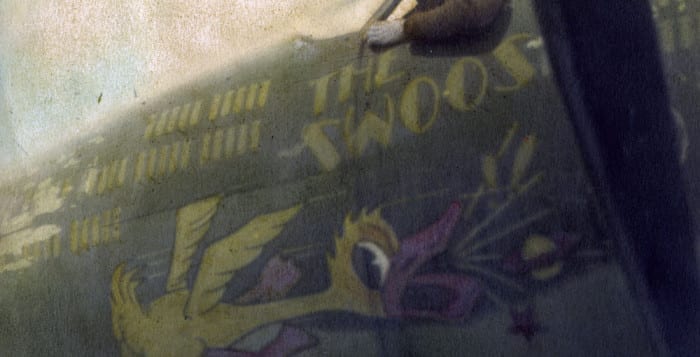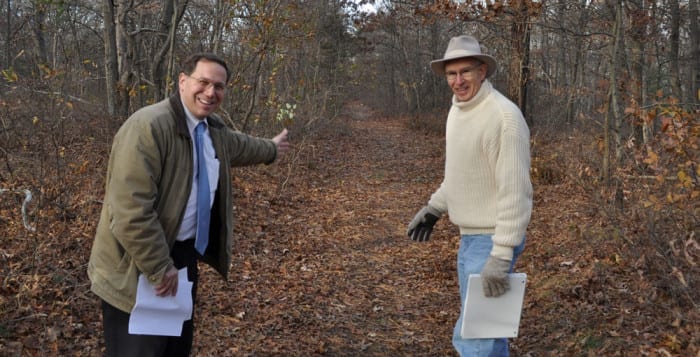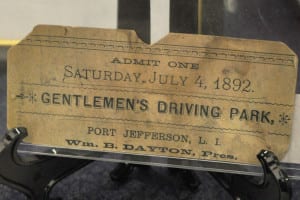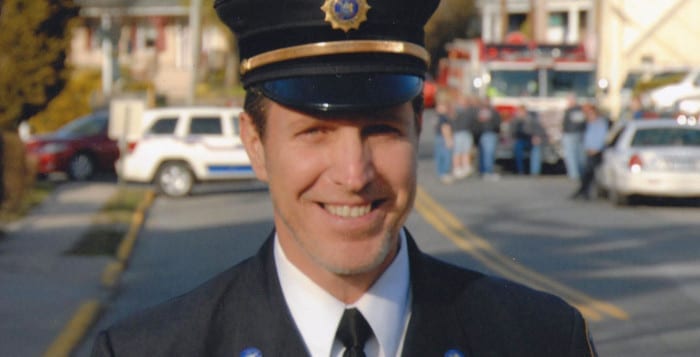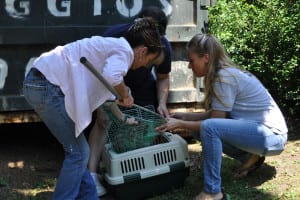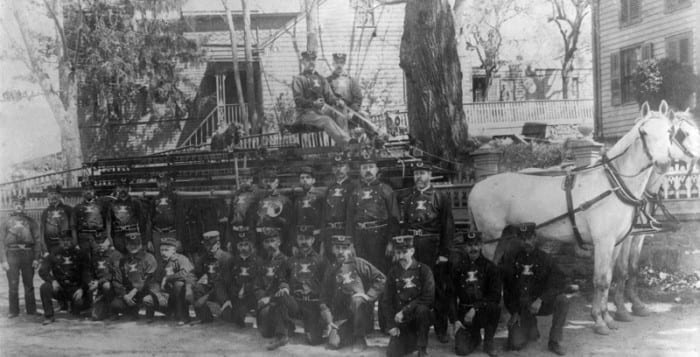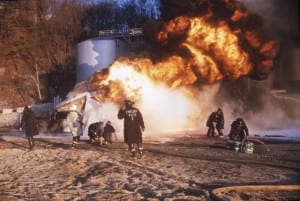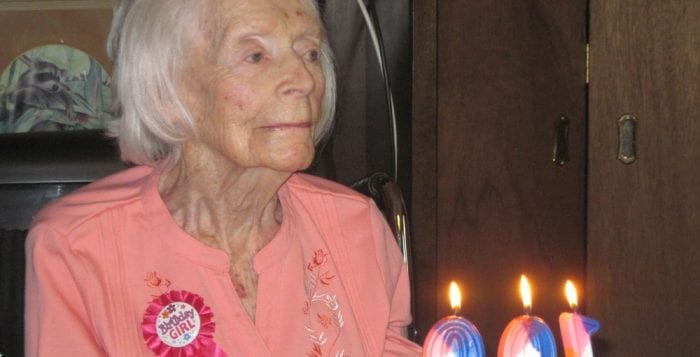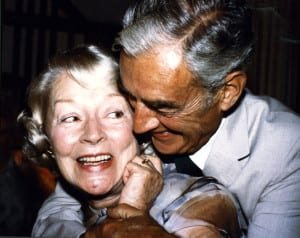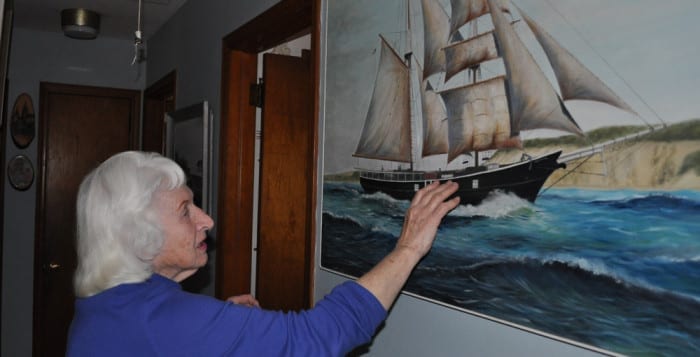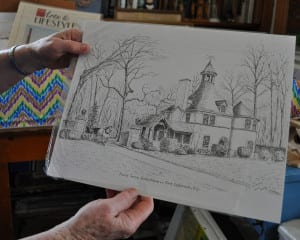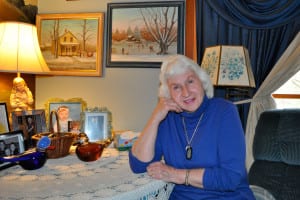One served in the Naval Air Force in the Pacific, a second on the ground in Europe and another in its skies, but all three put their lives on the line during World War II to protect their country. Several decades later, the Rotary Club of Port Jefferson honored the three village residents for their service at their meeting Tuesday for Veterans Day, to show them that their sacrifices would not be forgotten.
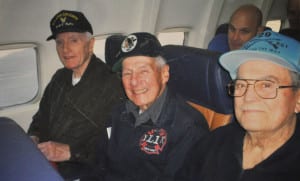
The three men, Walter Baldelli, Hugh Campbell and Fred Gumbus, are all still active in their community, as they are three of the longest-serving members of the Port Jefferson Fire Department.
Baldelli, 95, was a tech sergeant in the Army’s 29th Infantry Division. He recalled in a phone interview “the one that damn near got me”: He was standing guard in a city in Belgium and the Germans sent bombs over “every night so we couldn’t sleep.” When one came close one night, he ran for cover on one side of a church, and the bomb went off on the other side.
“I lost my hat, my coat went over my head; I dropped my rifle.”
When Baldelli walked around the building, “there was a mess of dead people.” He said that was the closest he came to being really hurt.
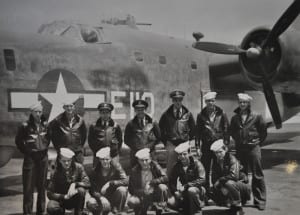
The tech sergeant also spent time during the war in Iceland, England, France — in Paris, he walked underneath the Eiffel Tower — and Germany. His last stop before returning stateside was Frankfurt.
Baldelli said, “It was quite an experience,” and when he finally arrived home one day at 3 am, he woke up his parents and “we started drinking wine till daybreak.”
Campbell also served in Europe, as a tech sergeant in the Army’s Ninth Air Force from 1942 to 1945. The 89-year-old former flight engineer said he remembers most of it like it was yesterday, and there was one point when he was going into battle every day.
“After a while, you begin to wonder, how many times can I do this, you know?” he said. There were “people shooting at you every darn day with everything they got.”
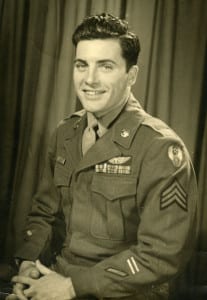
Campbell also shared that one day after a raid, so many men had been lost that he was sent out on a second raid in the afternoon. The commanding officer had said, “I hate to send you out again but we don’t have anyone else,” Campbell said.
He described the feeling of not knowing if he was alive or dead.
“Everybody you had breakfast with before you went wasn’t there, they’re gone.”
One interesting experience that Campbell had came after the war, when a longtime friend asked if he remembered any of his 44 missions against the Germans. Campbell told the story of a small city where a bridge went diagonally across the Rhine — which was unusual — and “they wanted to bomb and take the bridge out to cripple the German supply system.” He was about 19 years old at the time.
The friend replied that it was his village, that he had been there on the ground with his brother when it happened and saw the whole thing. The man recalled seeing big yellow triangles on the rudders of the bomber representing the insignia of Campbell’s group.
Campbell said his friend would not have known about the triangles unless he had, indeed, been there: “Here is a guy that was an enemy and now he and I are friends.”
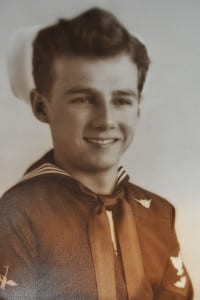
Gumbus was an aviation ordnanceman in the Naval Air Force from 1943 to 1946, with Patrol Bomber Squadron VPB-118. The 89-year-old former tail gunner, who goes by “Pop” in the PJFD because he is the most senior Gumbus in the department, served on the Pacific front.
While returning from one mission, Gumbus said, he called the pilot from the tail to warn that there were five Japanese fighters following theirs and another American plane. Though Gumbus’ plane made it out of the skirmish, the Japanese had taken out one of their engines and another one was in flames. He said they put out the fire but were losing altitude, and had to get rid of any weight they could. He tossed out toolboxes, parachutes and the insides of the guns.
The pilot released a bomb bay tank, but it tipped and got caught, and was hanging partly out of the bottom of the plane. Gumbus said he had to get rid of it, because if the plane were to land like that, the gas tank would have scraped the ground and exploded.
“Here I am trying to kick this thing” out of the plane, he said, and he was hanging over the plane’s open bottom above the Sea of Japan without a rope or harness.
Eventually the tank was loosened and fell out — and the plane, though sputtering, landed safely on Okinawa.
When he found out the Rotary was planning to honor him, Gumbus said, he thought, “Well that’s wonderful … because lots of times you’re forgotten.”
A modest Campbell said about being honored for his service, “I guess I appreciate it and it never occurred to me that anyone would ever say anything about it.”

